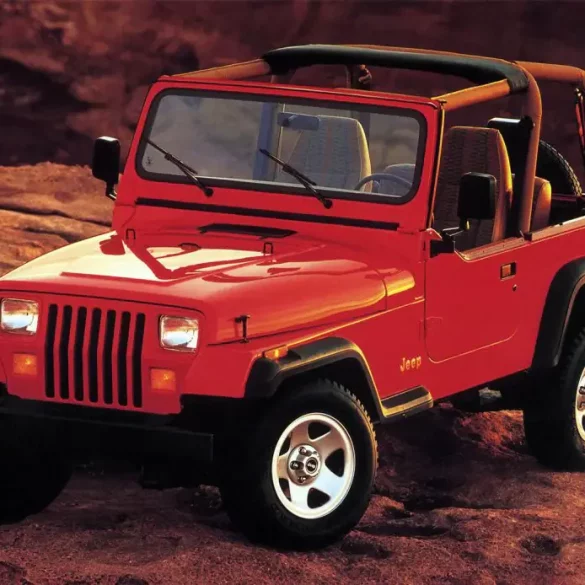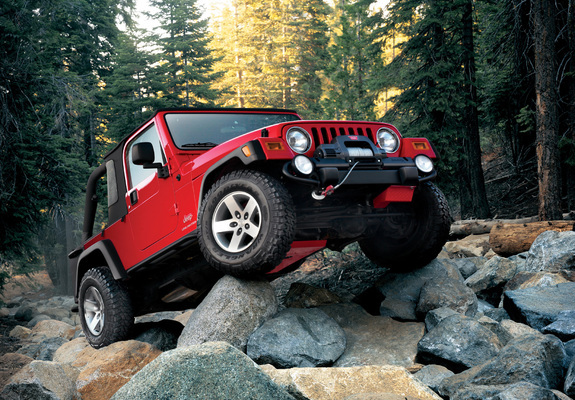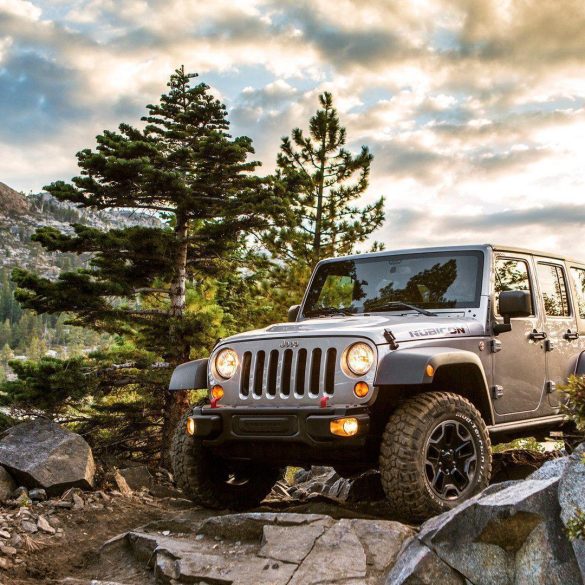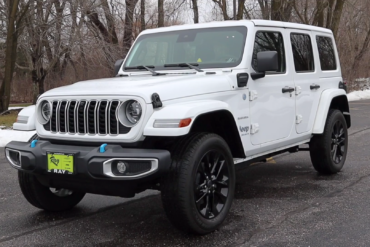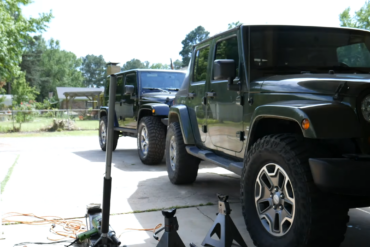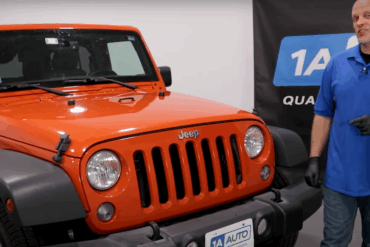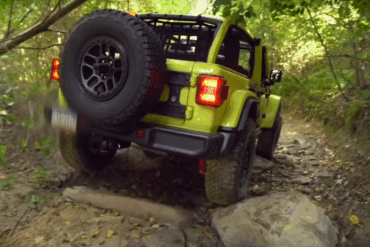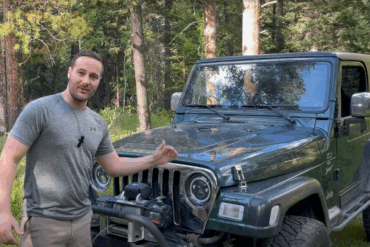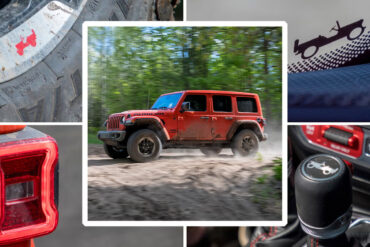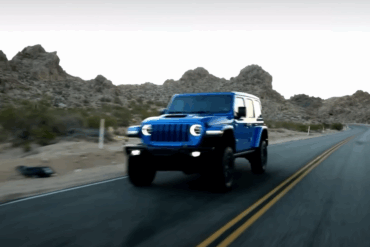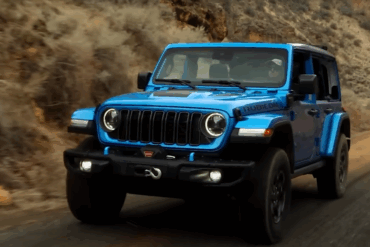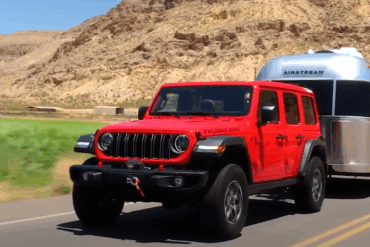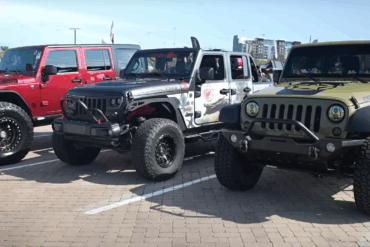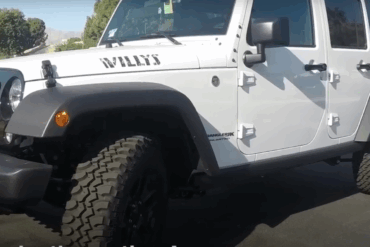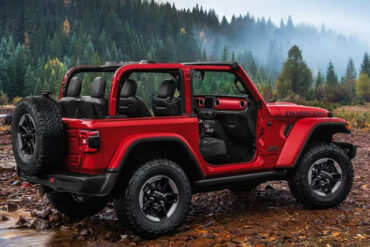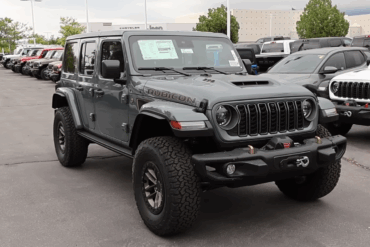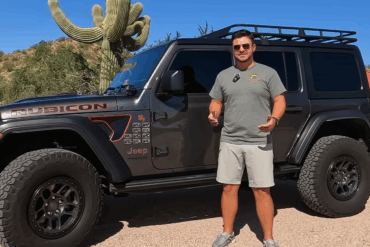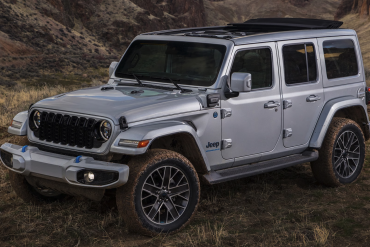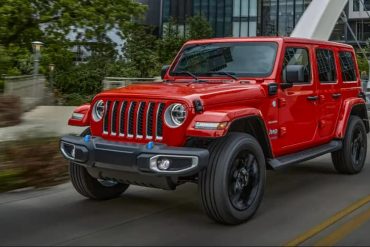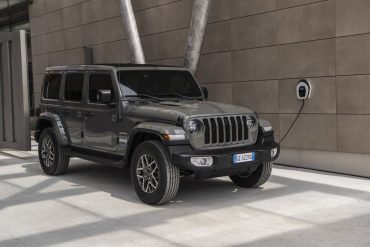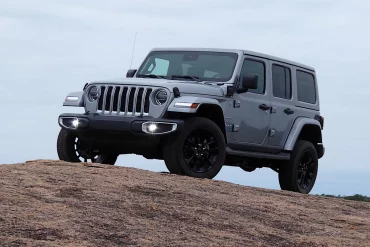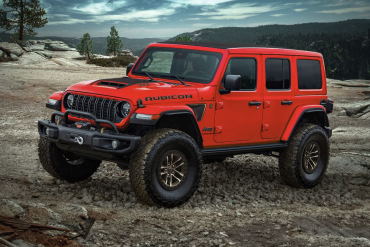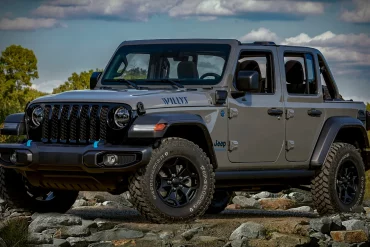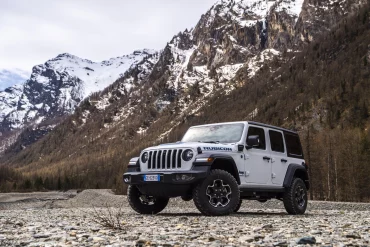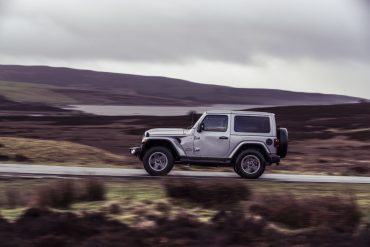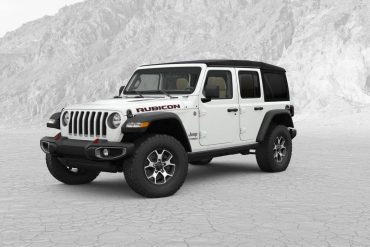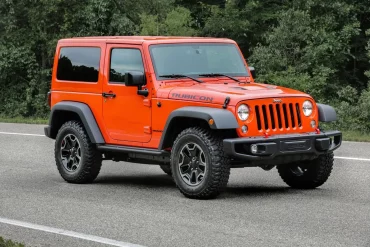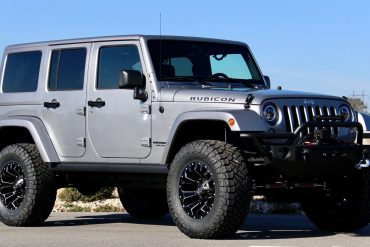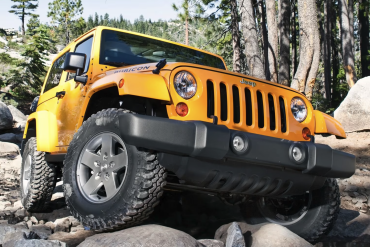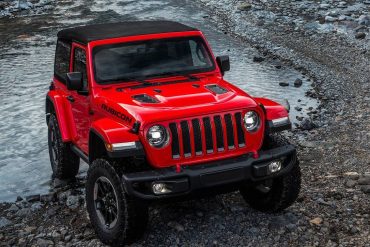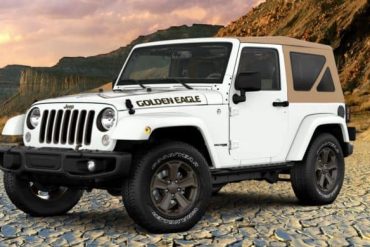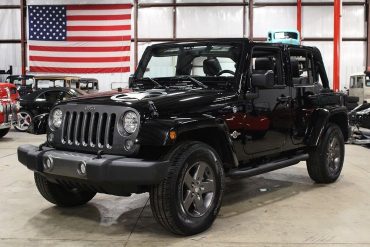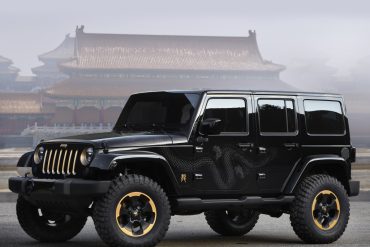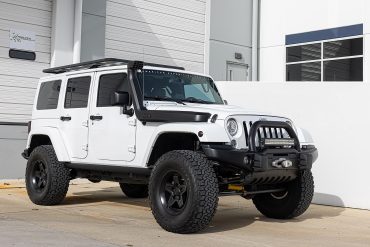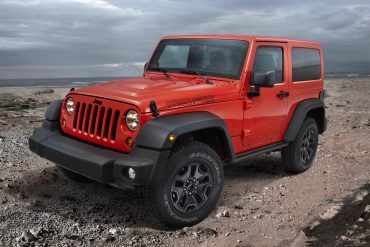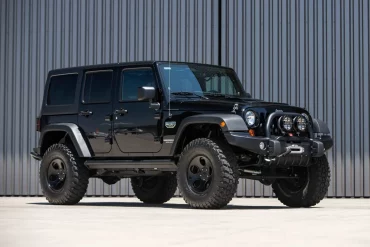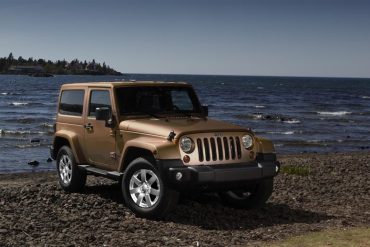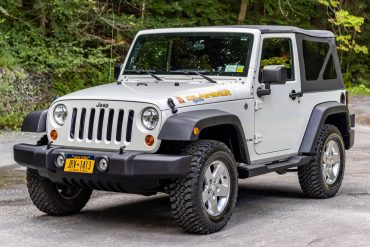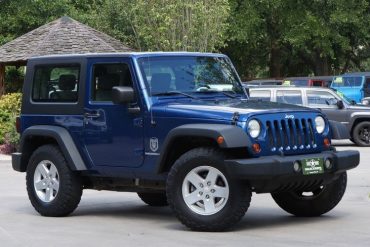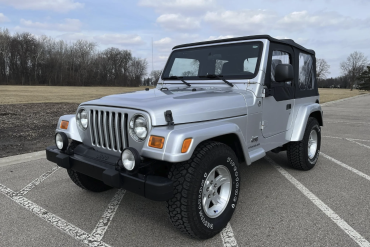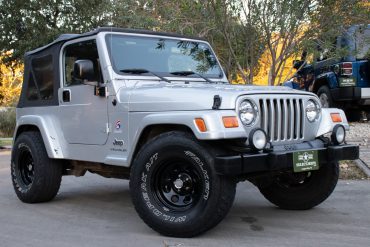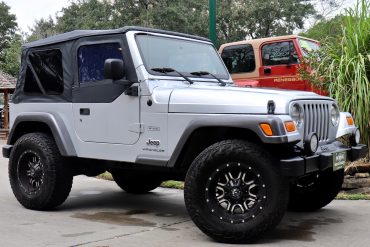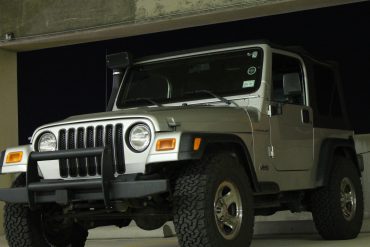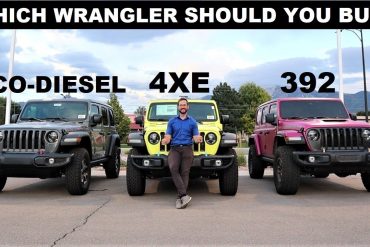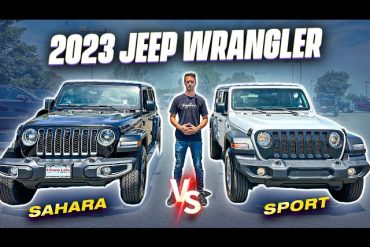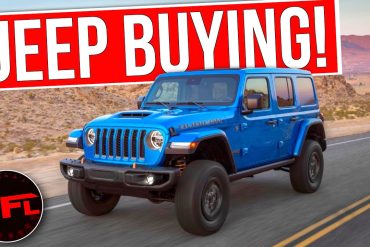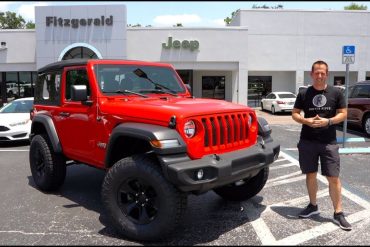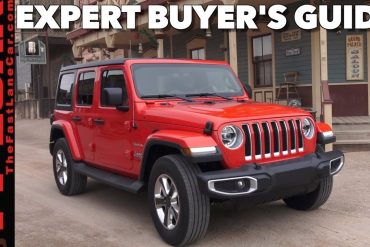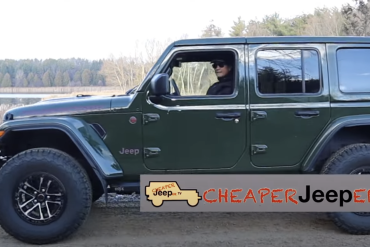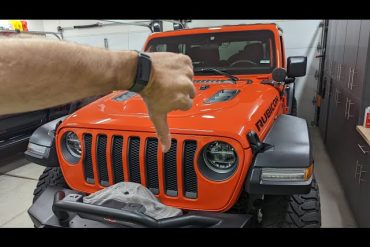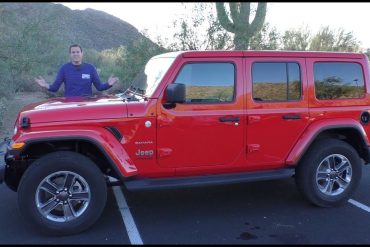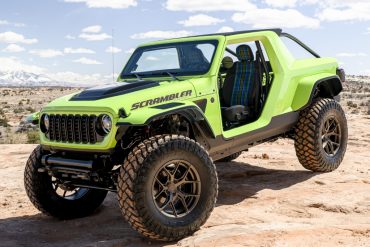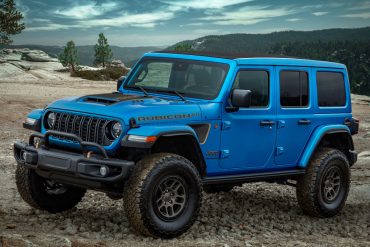Jeep Wrangler
Generation Guides / Model Year Research / Pics & Videos
The Jeep Wrangler, introduced in 1986, stands as an iconic symbol of rugged off-road capability and adventure. Renowned for its distinctive design and legendary 4x4 performance, it has become a favorite among outdoor enthusiasts and adventurers. Its versatility, combined with a rich heritage rooted in the original World War II Jeep, makes the Wrangler a significant player in the SUV market.
Jeep Wrangler Model Guides
Meticulously researched and curated, our comprehensive Jeep Wrangler model-year guides illustrate changes from year to year, specifications, available options, and more. Every model year and every special edition Wrangler included.
Jeep Wrangler Special Edition Guides
Some special edition Jeep Wrangler models from over the years.
Jeep Wrangler Videos & Wallpapers
Discover a collection of stunning wallpapers showcasing the iconic Wrangler and immerse yourself with our curated selection of videos. From historical overviews and restoration projects to off-road challenges and owner's reviews.
The Jeep Grand Wrangler - A Brief History & Look At Each Generation
The Jeep Grand Cherokee, first introduced in 1992 by Chrysler's Jeep division, is a mid-size SUV that has become a staple in the automotive industry. Known for its blend of rugged off-road capability and luxurious on-road comfort, the Grand Cherokee has earned a reputation as a versatile and reliable vehicle. Over the years, it has evolved through multiple generations, incorporating advanced technologies, improved performance, and enhanced safety features. The Grand Cherokee's design and engineering have consistently pushed the boundaries, making it a popular choice for both adventure enthusiasts and families alike.
The importance of the Jeep Grand Cherokee lies in its ability to bridge the gap between utilitarian SUVs and luxury vehicles. It set a new standard for the SUV market by offering a high level of comfort and sophistication without compromising its off-road prowess. The Grand Cherokee's success has not only solidified Jeep's position as a leading manufacturer of capable SUVs but has also influenced the development of other vehicles in the segment. Its enduring popularity reflects its ability to adapt to changing consumer preferences while maintaining its core identity as a reliable and versatile vehicle.
The 1st Generation
The 1987 Wrangler, designated the YJ, was introduced in mid-1986 during a significant overhaul of the Jeep lineup by then-owners Renault and American Motors (AMC) just before being purchased by Chrysler. It replaced the Jeep CJ-5 and CJ-7 models closely linked to the original civilian Jeep designed for use in World War II. And while that vehicle was highly successful, safety concerns and advancing technology rendered it a relic from another time.
The Jeep Wrangler YJ had less ground clearance but better stability and handling than the CJ-7. In addition, adding trackbar suspension links to the leaf-spring design, a wider track, and anti-roll bars improved safety over the CJ-7, which was known for stability problems on the pavement. Despite this, the YJ used the same wheelbase as the CJ-7 and retained trademarks like the ability to remove the doors, lower the windshield, and generous off-road capability.
The 117-horsepower 2.5-liter four-cylinder, designed by AMC and first used on the 1984 Jeep Cherokee, was the base engine, paired only with a five-speed manual transmission. A 112-horsepower, 4.2-liter six-cylinder was carried over from the CJ-7 and could be had either with a five-speed manual or three-speed automatic. Part-time four-wheel-drive with low range as standard.
And like the CJ, the Wrangler YJ carried forward with numerous trim packages, wheel options, half-door and full-door frames, and soft and hard roofs that could be removed for a near-convertible experience. Apart from the square headlamps instead of trademark round ones, it could be tough to tell a YJ from a CJ from certain angles.
Trim packages made up most of the changes to the Wrangler over the next nine years. The long-running, upscale Sahara model was introduced in 1988, as was the colorful Islander that lasted through 1993. And the 1991-94 Renegade added a monochromatic body kit with large fender flares and alloy wheels.
More substantial changes started in 1991 with the introduction of the modern, fuel-injected 4.0-liter six-cylinder option lifted from the Cherokee that boosted power by 78 horsepower to 190. The following year, Anti-lock brakes became an option, and rear-seat shoulder belts were added. An automatic transmission was made available on four-cylinder Wranglers beginning in 1994.
The YJ was discontinued after 1995. Apart from a Wrangler hiatus until early 1996, a new model was waiting in the wings.
The 2nd Generation
Arriving in early 1996 as a 1997 model, the Wrangler TJ was a heavily revamped version of the YJ that benefitted from numerous upgrades bestowed on the also-reworked Cherokee, including a more modern interior that dumped much of the original AMC/Renault design for Chrysler pieces.
The most noticeable exterior change on the Jeep Wrangler TJ was the return of the round headlights, long a distinctive feature on the CJs. In addition, the 2.5-liter four-cylinder and 4.0-liter six-cylinder engines returned with a five-speed manual or three-speed automatic, albeit with some modifications. While the wheelbase was unchanged, the leaf springs were ditched for coil springs front and rear for better on-road ride and handling.
SE, Sport, and Sahara were the standard trim levels through the TJ's 10-year run apart from the sporadic special edition, such as one in 2001 to commemorate Jeep's 60th anniversary, and a right-hand-drive version went to specific markets like the U.S. Postal Service. But the Wrangler mainly was left untouched as a niche model while its new parent, DaimlerChrysler, tried to get some ducks in a row.
The TJ finally got some attention in 2003 with the first new Jeep body style in 15 years. The Jeep Wrangler Unlimited used a 10-inch longer wheelbase, adding somewhat usable rear seats and a meaningful cargo area to the otherwise very compact SUV and only nominally affecting off-road performance. At the same time, the new Rubicon model included beefed-up axles, a more robust transfer case, and off-road tires with 16-inch alloy wheels.
Other changes ushered in for 2003 included a 150-horsepower, 2.4-liter four-cylinder from the Chrysler PT Cruiser and other company products to replace the old AMC-designed 2.5-liter four, along with a four-speed automatic option replacing the three-speed. New seats and new audio systems were also phased in at this time, while for 2005, a six-speed manual supplanted the old five-speed unit before a vastly new Wrangler arrived for 2007.
The 3rd Generation
Despite its advancing years and only sporadic updates, the Wrangler was increasingly popular and profitable for now-ailing DaimlerChrysler. The automaker gave Wrangler its first all-new platform with the third-generation JK Wrangler, released in 2007.
Among the significant changes was that the longer Wrangler Unlimited gained even more length and now had four doors, and soon became the most popular format. In addition, there were other new features for two and four-door Wranglers, including standard stability control and anti-lock brakes, optional electronic limited-slip differential and disconnecting sway bars, power windows and locks (for the first time), remote keyless entry, and a navigation system with built-in audio storage. A soft top continued to be standard, with full doors and a detachable hard top offered.
Jeep dropped the previous four and six-cylinder engines for a Chrysler-designed 202-horsepower, 3.8-liter V6. A six-speed manual and four-speed automatic were still offered, but a two-wheel-drive was now standard on the base Unlimited X (later Sport) model. Sahara and Rubicon models continued with part-time four-wheel-drive.
Chrysler was spun off into a new company later in 2007 that quickly ran into financial problems before entering into a government-orchestrated Chapter 11 bankruptcy and marriage with Italy-based Fiat in 2009. During this time, there were few changes to the Wrangler, one of the few bright spots for the automaker.
There were only minor trim and appearance changes — such as an easier-to-fold soft-top, trailer sway control, and a hill-start assist system — until 2011. The Wrangler received a new interior design with the updated UConnect infotainment system, new climate controls and window switches, and leather upholstery and heated front seats joined the options list. Four-wheel drive was also reinstated on the standard equipment list.
The following year, a 285-horsepower, 3.6-liter V6 powertrain from the Jeep Grand Cherokee and many other applications replaced the old 3.8, significantly boosting power and efficiency with a newly available five-speed automatic. New special versions, the Call of Duty: MW3 and Altitude editions, also joined the line for one year.
New trim packages and reshuffled equipment levels finished the JK line until the redesigned Wrangler JL launched in 2018. But the Wrangler JK lived on for a few more months as a lower-cost alternative — and to help the Toledo, Ohio factory keep pace with feverish demand for the vehicle.
The 4th Generation
The JL series Wrangler arrived for 2018 and capitalized on the popularity of what was once a niche vehicle. While it continued on a modified version of the third-generation Wrangler's platform, several modifications broadened the vehicle's appeal and price range.
The 285-horsepower 3.6-liter V6 continued but was now attached to either a six-speed manual transmission or an eight-speed automatic from other Fiat Chrysler (now Stellantis) applications. Soon after launch, a new 270-horsepower, turbocharged 2.0-liter four-cylinder was added, which came only with the automatic and a 48-volt mild-hybrid system for slightly better fuel economy.
As before, two-door Wrangler and four-door Wrangler Unlimited versions were available in a string of trim levels, but the standard Sport, Sahara, and Rubicon models remained. Numerous improvements also make it easier to convert hard and soft-top versions without doors, windows, or a roof or to fold the windshield down. Doors were lighter and easier to remove, and a new fixed-roof version of the Unlimited offered a Sky One-Touch power-retractable canvas roof for the easiest open-air experience.
There were more significant technology and safety feature upgrades, such as curtain and side airbags for both rows, blind-spot monitoring, lane-departure warning, a backup camera, an available front-mounted off-road camera, and automatic emergency braking.
All models used a version of the UConnect infotainment system, ranging from a 5-inch touchscreen to an 8.4-inch unit. At the same time, Apple CarPlay and Android Auto compatibility were new, with front and rear USB charging ports.
The Scrambler pickup truck, dropped with the CJ-7 in 1986, was replaced by the 2019 Jeep Gladiator and was heavily derived from the Wrangler Unlimited JL with the addition of a bed on the back but offering similar roof options, removable doors, and the same dashboard and engine options.
A 260-horsepower, 3.0-liter "EcoDiesel" turbodiesel V6 joined the line for 2020, mated only to the automatic, joined both the Wrangler and Gladiator engine choices.
Two other engine options arrived for 2021. The Wrangler Unlimited 4xe was the first plug-in hybrid (PHEV) Jeep, using the 2.0-liter turbo and an electric motor tied to a 17 kWh battery pack. It was Environmental Protection Agency (EPA)-rated at 22 miles on a full charge and offered a combined output of 375 horsepower on Sahara and Rubicon models.
At the other end of the fuel economy spectrum, the Unlimited Rubicon 392 had the 470-horsepower, 6.4-liter Hemi V8 shoehorned from the Dodge Charger R/T Scat Pack, among other high-performance Stellantis models. The first V8-powered Wrangler was estimated to run from 0-60 mph in 4.2 seconds and return 14 mpg in more moderate city and highway driving. The base price was also a cool $75,000.
For 2022, Jeep introduced the Willys trim level, equipped with the Xtreme Recon package, which added larger 35-inch all-terrain tires, 17-inch alloy wheels, larger brakes, a lifted suspension, and special badging.
In 2023, the Freedom Edition added off-road protection in the form of a steel front bumper and rock rails below the doors. Other changes to the lineup include new wheels for Rubicon trim models and new paint colors.
More changes came on the 2024 Wrangler. The JL Wrangler got its first significant update with revised styling, including a new grille with better airflow for cooling, several new wheel options, and an available factory winch upgrade.
Changes to the rear axle and the better cooling also allowed for a higher towing capacity rating, now up to 5,000 pounds. Willys trims received upgraded tires, a locking rear differential, and new fender flares borrowed from the Jeep Wrangler Rubicon. The Wrangler Unlimited 4xe drivetrain was offered on a broader range of trim levels, including Sport and Rubicon X Wrangler models.
Inside the cabin, seen above, significant upgrades included a 12.3-inch touchscreen infotainment system as standard equipment. The optional built-in navigation included many trails, allowing drivers to test the Wrangler's off-road capability. And many other upgrades, including a power seat and revised active noise cancellation, made the 2024 Wrangler interior quieter and more comfortable than ever.

